




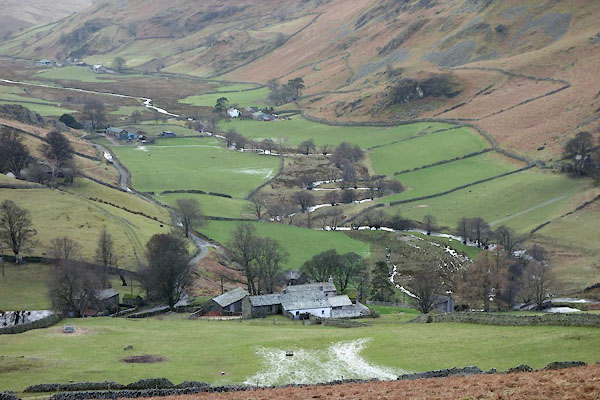
BZZ07.jpg (taken 27.2.2014)
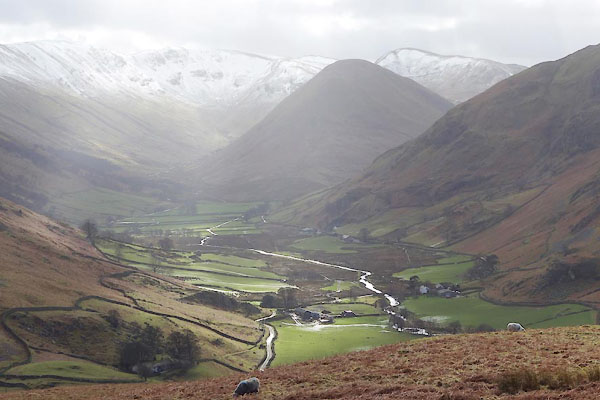
BZZ08.jpg (taken 27.2.2014)
placename:- Martindale Common
OS County Series (Wmd 13 9)
placename:- Martendale Forrest
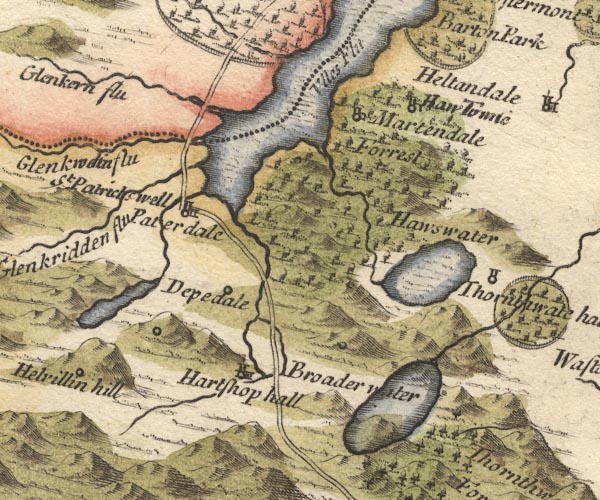
MD10NY41.jpg
"Martendale Forrest"
Trees.
item:- JandMN : 24
Image © see bottom of page
placename:- Martindale Forest
 goto source
goto sourcePage 1021:- "..."
"... there are divers Forests in the Barony of Westmoreland, as ... Martindale-Forest, which extends almost the whole Length of Ulleswater; ..."
placename:- Markendale Forrest
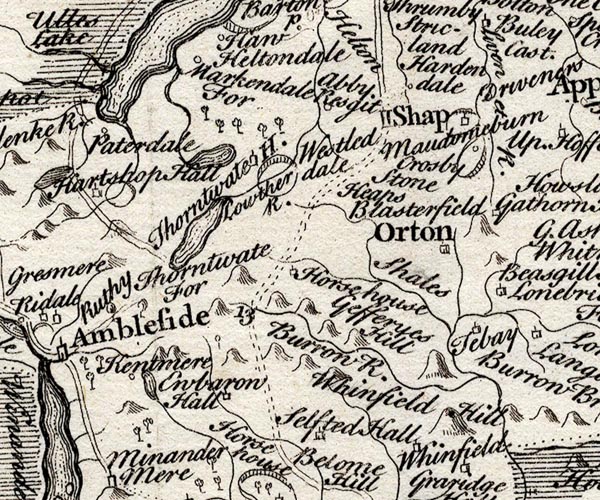
SMP2NYK.jpg
"Markendale For"
Tree symbols.
item:- Dove Cottage : 2007.38.59
Image © see bottom of page
placename:- Martendale Forest
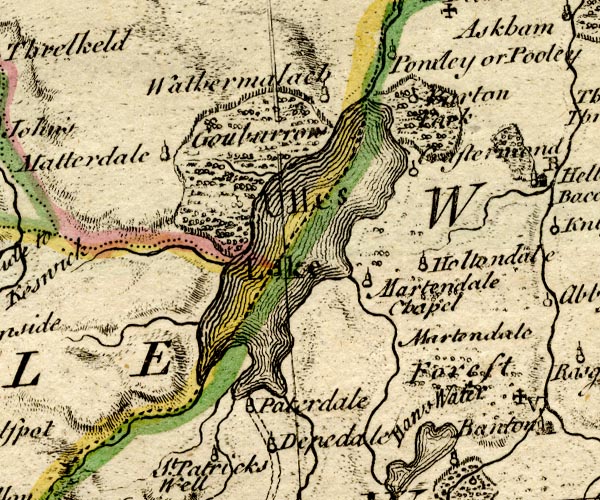
BO18NY31.jpg
"Martendale Forest"
trees or bushes
item:- Armitt Library : 2008.14.10
Image © see bottom of page
placename:- Martindale Forest
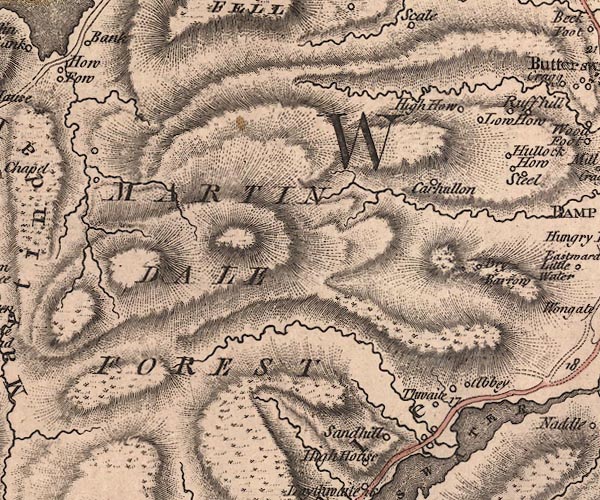
J5NY41NE.jpg
"MARTINDALE FOREST"
area
item:- National Library of Scotland : EME.s.47
Image © National Library of Scotland
placename:- Martindale Forest
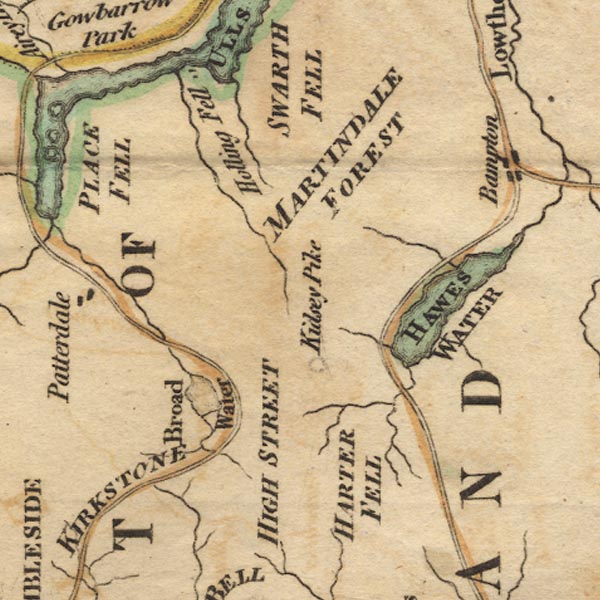
Ws02NY41.jpg
"MARTINDALE FOREST"
item:- Armitt Library : A1221.1
Image © see bottom of page
item:- land tenure; forest tenure; deer; red deer; deer hunt; hunting; boon day
 goto source
goto sourcePage 34:- "... The forest lands are held on the common forest tenure; the tenants having what grass they can take with the sythe. They likewise covenant not to drive the lord's deer out of it at any time of the year: In Summer, however, the deer seldom come there, they being mostly red deer, which always frequent the tops of the mountains in that season. Whenever the lord goes to hunt the stag, the Bailiff summons all the tenants, before sun-set the preceding night, to attend their strones or stations: these stations are at two places, viz. Bampskin [Rampskin] and Bannerdale, where the deer chiefly lye, and where the tenants stand with their dogs to prevent the deer from escaping into the mountains. This service, which they are to render once a year, is called a Boon Day, and for this every tenant has his dinner and a quart of ale: it is also a custom here, that the person who first seizes the hunted deer shall have his head for his trouble. It is remarkable that the first buck taken here was seized by a woman: she, for the sake of his head, laid hold upon him as he stood at bay upon a dunghill, threw him down, and getting upon his neck, held him fast. The late Mr Hassel frequently called upon the tenants for this service, and held upon these occasions a brilliant company of both sexes: his hunting was not, however, very successful; for I was told by one of the tenants, who had frequently attended his stand, that he never saw a stag either taken by the hounds, or by them driven to Ulswater, as one of our authors in a most pompous manner informs us. I have myself seen deer take the water; but they were, I think, always either such as had been wounded by shot, and afterwards pursued by the Bailiff's hounds, or such as had strayed from Barton or Patterdale, and had lain among the farmer's corn. A red deer swims the quickest and strongest of any animal except a swine: one of the latter I once pursued upon this Lake in a boat, which run remarkably quickly with oars; notwithstanding, the animal was only ten weeks"
 goto source
goto sourcePage 35:- "old, and had swam two miles before I set forward. Such was its swiftness and perseverance, that, had it not been partly through compassion to the owner, and partly through fear of the ridicule of the spectators, I had certainly given up the chace."
"..."
item:- deer; red deer
 goto source
goto sourcePage 190:- "..."
"Of quadrupeds. - The first is the red deer, which is bred upon the tops of the mountains in Martindale, and are exceeding wild, never being fed in Winter; they always seek for and abide in the highest places, and feed on herds; one always keeping watch in the day-time, which keeps snuffing and looking about: this is always a stag, and so delicate is their smell, that they will give notice of an enemy at 300 yards distance, if on the wind-side of them. ... If a stag is wounded, and yet able to follow the herd, he joins them, and does not shew the least pain or uneasiness, though he will sometimes fall down in sight of you; at others, if you can perceive him wounded, and have a dog to hunt him, he will be found hid in the heath or rocks as soon as ever he has got out of your sight: They will sometimes take several shots to kill them after the first wounding, but if you have a hound dog with you they will not turn."
"The stag sometimes in harvest, in the dead of the night, leaves the mountains and comes into the corn-fields, lays himself down on one side to feed, and slides in that situation along a furrow to fresh places, not getting upon his feet, and thus with his body destroys more corn than he eats; if he stays two or three days, he so over-eats himself that he is easily run down. In 1786, one in Martindale did not run above two miles before a couple of hounds till he dropt down dead. In rutting time, if two stags meet that are each of them masters of herds, a battle ensues, and dreadful is the conflict; they are next to the game-cock for agility; they walk round each other to get a push at the body if they can, but the other generally catches his adversary's head with his own, and such a clash of horns is then heard as would astonish any man; then they will push at each other like two bulls, then fetch a run like two rams; and so fixed are their eyes upon each other, that a person may sometimes get within twenty yards of them, and a good while before either of them discover him. Their engagement often lasts half an hour, and they frequently break their horns, sometimes near the head, or near the middle: which ever is conquered generally flies his country several miles, often crossing Ulswater, and never again returning; the other then reigns sovereign of both herds, and unites them as a conquered country to his own. The conquered stag hath been known to live many years quite alone: ..."
placename:- Martin Dale Forest
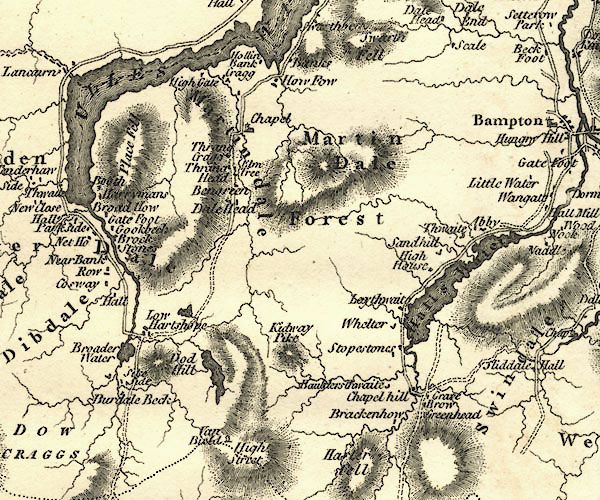
CY24NY41.jpg
"Martin Dale Forest"
hill hachuring
item:- JandMN : 129
Image © see bottom of page
placename:- Martindale Forest
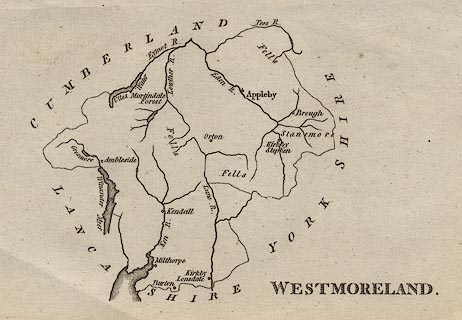 click to enlarge
click to enlargeAIK2.jpg
"Martindale Forest"
area
item:- JandMN : 51
Image © see bottom of page
